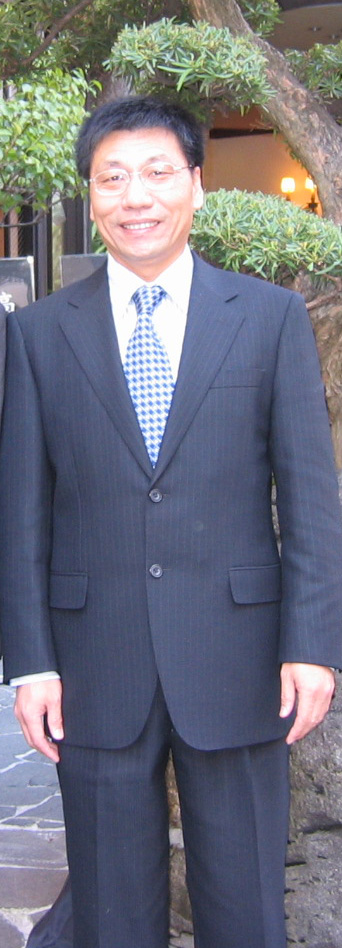If what they have proven in preclinical's is successful in humans, it's to the moon!
And remember, Min's laboratory was the first in the world to utilize siRNA to silence immune associated genes in immune cells. The first in the world. Dr. Min is somewhat of an authority on the subject.

Dr. Weiping Min
Education
-
Ph.D., Kyushu University, Immunology
-
M.Sc., Jiangxi Medical University, Parasite Immunity
-
M.D., Jiangxi Medical University, Medicine
Training
-
Department of Medical Microbiology and Immunology, University of Alberta
-
Department of Immunology, University of Toronto
Honours and Awards
- Dean’s Award of Excellence (Team Award) – Schulich Medical School, UWO, 2007
- Junior Faculty Award – American Association of Immunologist, 2007
- Travel Award- Federation of Clinical Immunology Societies,2007
- Premier’s Research Excellence Award – Ontario Government, Canada, 2005
- Best Abstract Award - European Society of Organ Transplantation, 2005
- Travel Award – Basic Science Symposium of the Transplantation Society, 2005
- James Hogg Award Finalist – YI Forum, Canadian Institutes of Health Research, 2004
- Travel Award – International Congress of Immunology, 2004
- Travel Award – Young Investigator Forum, Canadian Institutes of Health Research, 2004
- Junior Faculty Award – American Association of Immunologist, 2003
- Special Studentship of Peace and Friendship - Japanese Government, 1995
- Studentship for Excellent Overseas-student - Japanese Government, 1994
- Ishizawa Memorial Studentship - Ishizawa Memorial Medical Foundation, 1992
- Sasagawa Medical Scholarship – Japanese Medical Association, 1991
Scientific Appointments
- Associate Professor, Department of Surgery
- Associate Professor, Department of Pathology
- Assocaite Professor, Department of Oncology
- Immunologist, London Health Sciences Centre
- Scientist, Lawson Health Research Institute
Benitec's Unique Platform:
Expressed RNA interference (RNAi) technology
Our unique platform, ddRNAi, has distinct advantages over other methods of gene silencing such as siRNA, anti-sense and zinc finger nucleases. Following is a detailed description and here is a summary.
Our patents cover the use of RNAi resulting from the introduction of a DNA construct to the target cell nucleus in vivo to effect long-lasting genetic silencing. This is what we call DNA-directed, or ddRNAi. To explain how ddRNAi is different, let’s first look at the other major approach to RNAi, small interfering, or siRNA.
Gene silencing by siRNA
In siRNA, double stranded (ds)RNA molecules are synthesized in a laboratory and introduced to the cell. The siRNA is designed to cleave the target gene mRNA and so prevent production of the specific target protein. Delivering the siRNA molecule to the target organ or tissue in a way that maintains its activity and efficacy has proven to the most difficult aspect of siRNA-based therapeutics.
According to a 2009 review of drug delivery, ( Rao, Vorhies, Senzer et al ) siRNA has a number of limitations:
- It's rapidly degraded so, without modification, keeping it stable during delivery is problematic
- Such modification has the potential to alter key performance characteristics
- siRNA needs to be delivered to specific cells or tissues or its effective concentration will be diluted
- siRNA's loading efficiency into cells is generally low, so higher doses are usually needed
- High dosage can cause higher toxicity and ‘off target effects’

Gene silencing by ddRNAi
Benitec Biopharma’s patented approach to gene silencing overcomes most of the challenges of siRNA-based methods because it utilises a DNA-based approach, called DNA-directed RNAi (ddRNAi). The difference lies in the method of introducing siRNA into the cell: ddRNAi causes the cell to produce siRNA itself, rather than introducing synthetic siRNA. It does this by producing a precursor molecule called short hairpin RNA (shRNA) in the nucleus, which enters the cytoplasm and is processed to siRNA by the cell’s own machinery. The specific shRNA is coded for in the nucleus as a result of transfecting the cell with a DNA-based construct, hence the concept of RNAi directed by DNA.
ddRNAi introduces a DNA sequence directly into the cell’s nucleus, and to do that, a range of well-characterized gene therapy vectors, viral and non-viral, like lentivirus, adenovirus, AAV or modified polyethylenimine can be used. The DNA sequence codes for specific shRNAs which are processed to siRNAs and complete the RNAi cycle in the cytoplasm. Herein lies another major difference: because of the delivery mechanism and site, only a minute dose (perhaps as few as 5 copies) of the DNA construct is needed, yet the genetic change is long-lasting, because the shRNA continues to be expressed for long periods, potentially up to years from the integrated DNA construct ( Sci Trans Med 2010 ).
Due to the low dose and short term administration (potentially as little as one dose) many of the drawbacks of siRNA methods, such as toxicity, immune activation and unwanted gene effects (off-target effects) are overcome. Thus ddRNAi promises to deliver long lasting, relatively safe treatments for or cures of many human genetic conditions.
ddRNAi can also be used to target multiple genes or multiple parts of one gene, so more complex conditions can be treated with tiny doses, without the side-effects of high-dose, long term administration.
A major benefit for researchers and biopharma companies worldwide is that ddRNAi is a globally patented platform technology, rather than a proprietary gene specific technology or delivery mechanism. This means, if you‘re seeking to use DNA-directed methods for therapeutic gene silencing for a range of disease-associated genes, Benitec Biopharma is the only entity you need to deal with to obtain licenses for your particular programs.
BMSN

